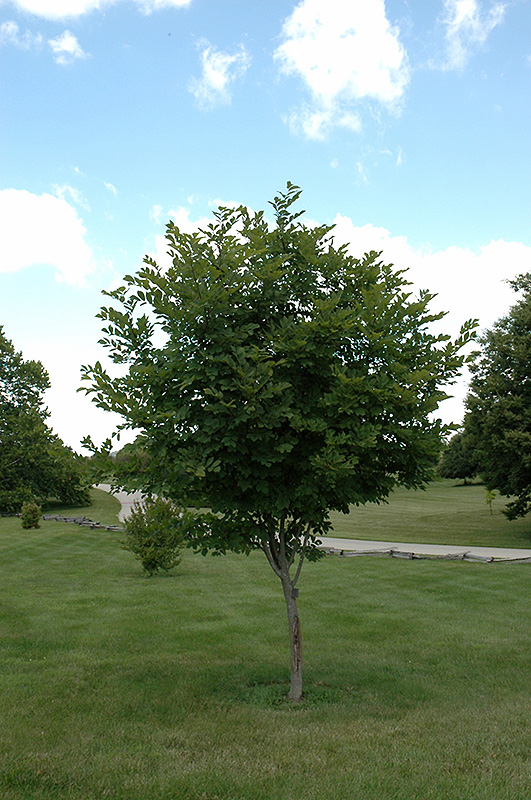Perkins Pink Yellowwood
Cladrastis lutea 'Perkins Pink'
Height: 45 feet
Spread: 45 feet
Sunlight:
![]()
Hardiness Zone: 5
Other Names: American Yellowwood, C. kentukea, C. tinctoria
Description:
A beautiful but somewhat fussy small tree with stunning cascades of pink flowers in spring, good habit of growth all year round; makes an ideal accent or shade tree for smaller properties; tends to flower profusely every second year
Ornamental Features
Perkins Pink Yellowwood is bathed in stunning panicles of fragrant pink pea-like flowers hanging below the branches from mid to late spring. It has light green deciduous foliage which emerges chartreuse in spring. The oval compound leaves turn yellow in fall. The smooth silver bark adds an interesting dimension to the landscape.
Landscape Attributes
Perkins Pink Yellowwood is an open deciduous tree with a more or less rounded form. Its average texture blends into the landscape, but can be balanced by one or two finer or coarser trees or shrubs for an effective composition.
This is a relatively low maintenance tree, and should only be pruned after flowering to avoid removing any of the current season's flowers. It is a good choice for attracting bees to your yard. It has no significant negative characteristics.
Perkins Pink Yellowwood is recommended for the following landscape applications;
- Accent
- Shade
Planting & Growing
Perkins Pink Yellowwood will grow to be about 45 feet tall at maturity, with a spread of 45 feet. It has a low canopy with a typical clearance of 5 feet from the ground, and should not be planted underneath power lines. It grows at a medium rate, and under ideal conditions can be expected to live for 70 years or more.
This tree should only be grown in full sunlight. It does best in average to evenly moist conditions, but will not tolerate standing water. It is not particular as to soil type, but has a definite preference for alkaline soils. It is somewhat tolerant of urban pollution, and will benefit from being planted in a relatively sheltered location. This is a selection of a native North American species.


